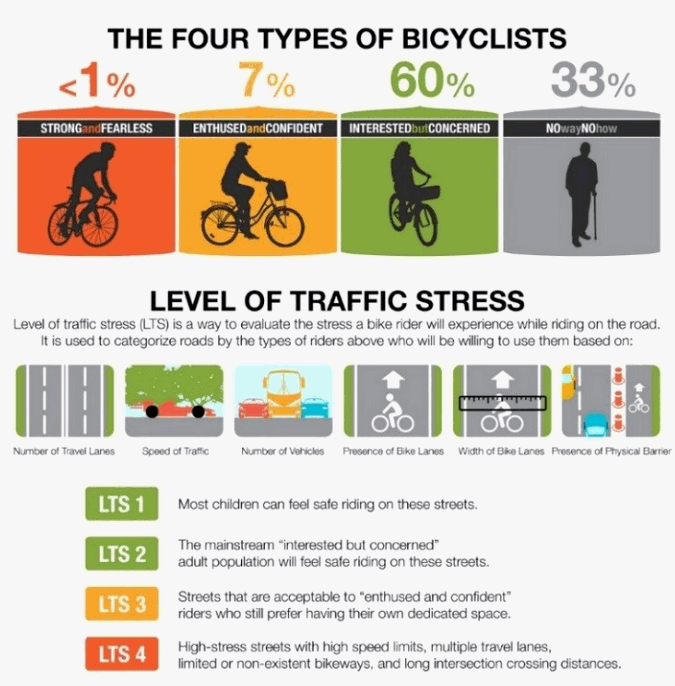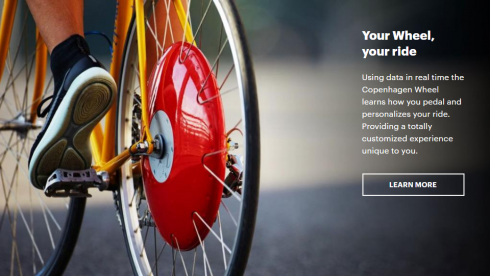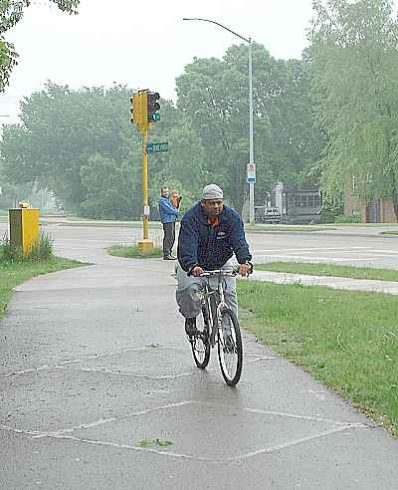I discovered John Forester’s book Effective Cycling in 1978, before there was a League course. I had already cycled as an adult for 14 years, including 7 years in which I rode in Boston-area urban traffic and two years taking recreational rides and overnight tours. I was ready for the book’s instructions about bicyclists’ rights and lane positioning, I had to try these techniques only a few times to discover that they worked.
I began writing for bicycle magazines around the same time, first Bike World. I wrote only a couple of articles for this magazine, then Bicycling. My writing for Bicycling started with my commenting on technical errors which I recognized, with my engineering background. My first articles for were on mechanical topics, but I also took up writing articles about riding skills. I worked from home in the Boston area, with occasional visits to the Bicycling offices in Emmaus, Pennsylvania, during which I stayed at the home of John Schubert. Work for Bicycling Magazine led to my being listed as a contributing editor on the magazine’s masthead. I also landed a contract to write a book to be published by Rodale Press, publisher of Bicycling Magazine: The Complete Book of Bicycle Commuting. This book covered what I had learned from Forester about riding skills, but with some additions. Notably, my book also covered riding in circular intersections (traffic circles, rotaries — no modern roundabouts yet) and winter riding. I included chapters on topics of particular interest to utility cyclists which Forester had covered only lightly or omitted. The book was illustrated with photos mostly by my friend Sheldon Brown, and drawings by Rodale artist George Retseck.
During that same time, I became increasingly skilled as a bicycle mechanic. Many articles I wrote were on mechanical topics. I built up and maintained my own bicycles.
I became an Effective Cycling instructor in 1982, working under my proctor, Richard Talbot. Reflecting the knowledge evident through my writing, I was able to be certified as an instructor following written and road tests, without having taken the course.
I became the main contributor to Bicycling’s In Traffic column, repeating and expanding on the matieral which I had written in my book.
In 1984, I jumped ship from Bicycling magazine along with several of its editors and took up writing for their new magazine, Bicycle Guide. It lasted for several years before it folded.
In 1985-86, Crown publishers had me prepare an updated version of Glenn’s Complete Bicycle Manual. This included much new material about equipment, particularly internal-gear hubs, and riding-skills information. Most of the new illustrations were photos that I took.
in 1986-87, Pat Brown at Rodale Press asked me to prepare a version of the traffic-skills section of The Complete Book of Bicycle Commuting for Rodale to offer as a premium booklet — Bicycling Street Smarts. And in the late 1990s, the Pennsylvania Department of Transportation adopted this as the Pennsylvania Bicycle Driver’s Manual.
In 2003 I ran for Regional Director of the League of American Bicyclists, and was elected. I served on the League’s Board for 6 years and was a member of its Education Committee. One of my major efforts was in editing a book on bicycling skills.
I taught a reduced 20-hour version of the Effective Cycling course in the 1980s — leaving out the material about bicycle maintenance, which most people were going to leave to a bike shop anyway. I taught the further reduced 10-hour version around 2010 but was seriously unhappy with the quality of the teaching materials. It was good (!) that the League’s PDFs weren’t locked against change, because I had to move, rotate and resize images of bicycles and motor vehicles so they made sense.
I have looked through the League’s more recent materials and they are slicker, but they don’t cover traffic skills consistently and thoroughly enough to satisfy me.
I took the CyclingSavvy course in 2011 and the training to become an instructor in 2017. I learned:
- Greater assertiveness in lane positioning -most usually, leaving a bike lane entirely rather than riding along its left edge, when that would encourage close passes;
- Making lane changes in one step rather than two;
- Group riding tactics: merging from the rear, riding in an orderly double file, communication within the group;
- Taking advantage of traffic-signal timing to turn into a street when it would be empty, and immediately entering the appropriate lane rather than having to negotiate with motorists and merge across (though I was good at that).
- A better approach to teaching, with excellent instructional materials and a guided discussion method.
I teach CyclingSavvy courses a couple times per year, contribute to the Savvy Cyclist blog, and serve as Chair of the Program Committee of the American Bicycling Education Association, the parent organization of the CyclingSavvy program.




